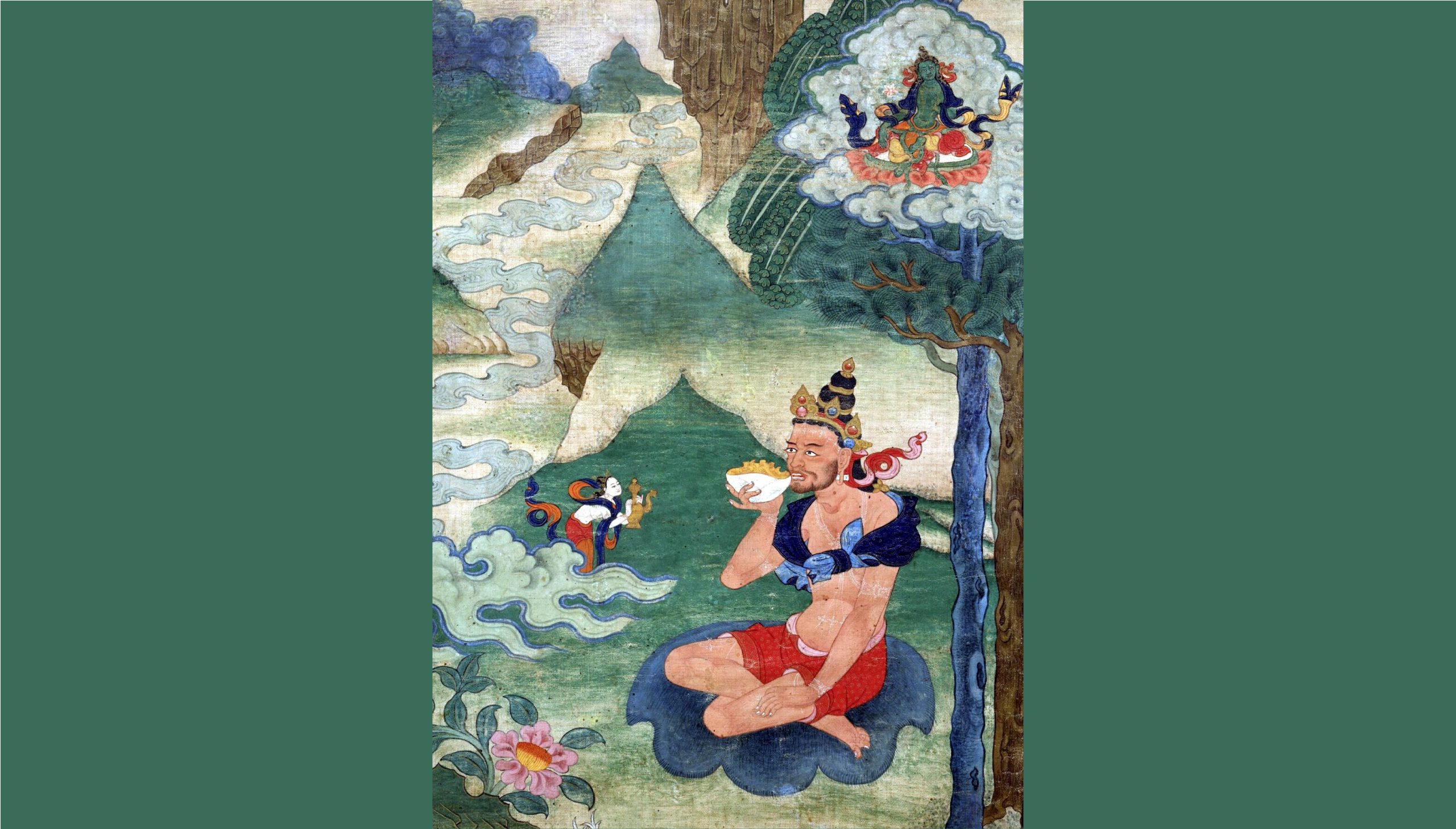
Naropa: The Dauntless Saint Who Lit the Path of Vajrayana
She disappeared like a rainbow fading in the blue sky. He could only see her as an old, ugly woman, but the Vajroyogini saw him for what he was and showed him the direction, which would change his life forever. Naropa, the scholar saint from Bengal, heralded a rich tradition in Buddhist philosophy. The a is remembered as the lineage holder of the Kagyu (Oral) School of Tibetan Buddhism. It is in his memory that every twelve years, in the ‘Year of the Monkey’, the Naropa Festival is celebrated in Leh. 2016 is a special year in the annals of Buddhism, as it marks the thousand years arrival of the great saint to the land of Ladakh. Infact, he is one of the eighty-four mahasiddhas, the ‘saints’ of Vajrayana.
t is believed that the vajrayana tradition given by Buddha himself, were transmitted by an unbroken lineage via Tilopa to Naropa, Marpa and Milaropa to present day. The first mention of Naropa was found in ‘Haraprasad Shastri’s Hajar Bochorer Bouddha Gan ou Dhnoha. Born as a Bengal Brahmin, his life mirrored the life of the Sakyamuni himself. Even as a child he exhibited exceptional qualities. It was only natural, when on coming of age, his decision to go off to Nalanda University and study with scholars. As the gatekeeper of the Northern gate of Nalanda, he gained reputation as a great scholar and a flawless debator and was eventually regarded as the ‘Guardian of the Northern Gates’. As I read through Keki Daruwalla’s story ‘Naropa’, I became the Bengali saint. One thing led to another and I found myself skimming through Niharanjan Ray’s highly acclaimed magnum opus Bengalir Itihas, I got to know that present day Chittagong in Bangladesh, takes its name from Chaityagram ‘The city of Buddhisht Shrines’. Even Huen Tsang’s account confirms the presence of Viharas (Buddhist monasteries) along with Tirthikas (Hindu Temples). It is said to be the golden era of Bengal, when Bengali Buddhist monks spread Buddhism to Tibet and Sri Lanka.
Stories of Naropa’s quest to find his guru, Tilopa is well known. Twelve minor hardships before he was accepted as a disciple and the twelve major hardships after to his full realization of Mahamudra, shows deep insight into his dedication and the rigour of his training. He is also the shining example of how a shishya should be. His faith and devotion to his teacher, according to him, helped him attain enlightenment in one lifetime. Even today, he is painted with his guru Tilopa in many a paintings and even tankhas. They were inseparable; they were like the sun and moon. Renowned for their wisdom and profundity of their learnings, Naropa and Tilopa turned the wheels of Dharma countless times in all directions possible. Today, monks, devotees, tourists and even celebrities come together from all over the globe for the Naropa festival. Given the growing size of the festival, it has been quite precisely being titled the ‘Kumbh Mela’ of the Himalayas. Given the distinctive significance of the year, the fourth edition of the celebrations have been made to coincide with the display of the several story silk brocade tapestry bearing the image of the celestial Buddha in the Hemis Monastry.
The entire district breaks out in the riot of colours and reverberates with the sound of music and chantings. The blowing of the conch shells and the beating of the gongs and drums makes the peaceful land purified by the prayer flags vibrant and purified. One of the highlights of the festival this year, is the presence of the reigning head of the Drukpa Order, His Holiness the Gyalwang Drukpa, decked in 6 bone ornaments. The head of the Drukpa is considered to be the reincarnation of Yogi Naropa and the six bone ornaments symbolic of the six dharmas or yogas taught by Naropa. It is believed that those who behold all these six bone ornaments are granted, “liberation on sight”, i.e., they are elevated to gain enlightenment. In his honour, in the year1974, in Colorado, the university known for Buddhist studies, wherein western liberal arts meet the Eastern traditions, was named Naropa University. As the entire world celebrates this extraordinary human being, it is to be noted that he came back to Phullahari (presently in the state of Bihar) in the last years of his life. Like the fruit, which falls of the tree when it’s ripe, he too came back to where it all started.


